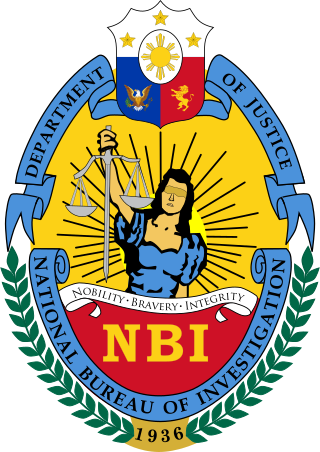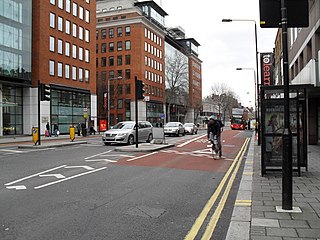
The president of France, officially the president of the French Republic, is the executive head of state of France, and the commander-in-chief of the French Armed Forces. As the presidency is the supreme magistracy of the country, the position is the highest office in France. The powers, functions and duties of prior presidential offices, in addition to their relation with the prime minister and government of France, have over time differed with the various constitutional documents since the Second Republic.

The Weimar Republic, officially known as the German Reich, was a historical period of Germany from 9 November 1918 to 23 March 1933, during which it was a constitutional federal republic for the first time in history; hence it is also referred to, and unofficially proclaimed itself, as the German Republic. The period's informal name is derived from the city of Weimar, which hosted the constituent assembly that established its government. In English, the republic was usually simply called "Germany", with "Weimar Republic" not commonly used until the 1930s.

The Union of South Africa was the historical predecessor to the present-day Republic of South Africa. It came into existence on 31 May 1910 with the unification of the Cape, Natal, Transvaal, and Orange River colonies. It included the territories that were formerly a part of the South African Republic and the Orange Free State.

In the Philippines, provinces are one of its primary political and administrative divisions. There are 82 provinces at present, which are further subdivided into component cities and municipalities. The local government units in the National Capital Region, as well as independent cities, are independent of any provincial government. Each province is governed by an elected legislature called the Sangguniang Panlalawigan and an elected governor.

In the Philippines, regions are administrative divisions that primarily serve to coordinate planning and organize national government services across multiple local government units (LGUs). Most national government offices provide services through their regional branches instead of having direct provincial or city offices. Regional offices are usually but not necessarily located in the city designated as the regional center.

A city is one of the units of local government in the Philippines. All Philippine cities are chartered cities, whose existence as corporate and administrative entities is governed by their own specific municipal charters in addition to the Local Government Code of 1991, which specifies their administrative structure and powers. As of July 8, 2023, there are 149 cities.

Davao del Norte, officially the Province of Davao del Norte, is a province in the Philippines located in the Davao Region in Mindanao. Its capital and largest city is Tagum. The province also includes Samal Island to the south in Davao Gulf.

Public holidays in the Philippines are of two types: regular holidays and special non-working days.

Republic Day is a national holiday in India commemorating the adoption of the Constitution of India, and the country's transition to a republic which came into effect on 26 January 1950.

The National Bureau of Investigation is an agency of the Philippine government under the Department of Justice, responsible for handling and solving major high-profile cases that are in the interest of the nation.

The 13th Congress of the Philippines, composed of the Philippine Senate and House of Representatives, met from July 26, 2004, until June 8, 2007, during the fourth, fifth, and sixth years of Gloria Macapagal Arroyo's presidency. The convening of the 13th Congress followed the 2004 national elections, which replaced half of the Senate membership and the entire membership of the House of Representatives.

Since 1922, the United Kingdom has been made up of four countries: England, Scotland, Wales and Northern Ireland. The UK Prime Minister's website has used the phrase "countries within a country" to describe the United Kingdom. Some statistical summaries, such as those for the twelve NUTS 1 regions of the UK, refer to Northern Ireland, Scotland, and Wales as "regions". With regard to Northern Ireland, Scotland and Wales particularly, the descriptive name one uses "can be controversial, with the choice often revealing one's political preferences".
A contract is an agreement that specifies certain legally enforceable rights and obligations pertaining to two or more parties. A contract typically involves the transfer of goods, services, money, or a promise to transfer any of those at a future date, and the activities and intentions of the parties entering into a contract may be referred to as contracting. In the event of a breach of contract, the injured party may seek judicial remedies such as damages or equitable remedies such as specific performance or rescission. A binding agreement between actors in international law is known as a treaty.
Keith Stewart Thomson was from 2003 to 2012 a senior research fellow of the American Philosophical Society and is, starting in 2012, the Executive Officer of the American Philosophical Society and is an emeritus professor of natural history at the University of Oxford. He was appointed director of the Oxford University Museum of Natural History in July 1998. In 1987 he was appointed president of the Academy of Natural Sciences in Philadelphia. He had earlier been a dean at Yale University and director of Yale's Peabody Museum of Natural History. He is the author of several books and essays that deal with paleontology, the history of science and evolution.
A dominion was any of several largely self-governing countries of the British Empire. Progressing from colonies, their degrees of colonial self-governance increased unevenly over the late 19th century through the 1930s, and some vestiges of empire lasted in some areas into the late 20th century. With the evolution of the British Empire into the Commonwealth of Nations, finalised in 1949, the dominions became independent states, either as Commonwealth republics or Commonwealth realms.
Supradapedon is an extinct genus of hyperodapedontine rhynchosaur from mid-late Triassic deposits of Tanganyika Territory, Tanzania. It is known from the holotype SAM-11704. The holotype and only specimen of Supradapedon was first assigned to a species of Scaphonyx, Scaphonyx stockleyi. This species was reassigned to its own genus by Sankar Chatterjee in 1980 and the type species is Supradapedon stockleyi. One study, Langer et al. (2000), concluded that Supradapedon is a synonym of Hyperodapedon and referred it to Hyperodapedon sp. However, the provisional validity of this genus has been commonly accepted since.

Theobalds Road is a road in the Holborn district of London. It is named after Theobalds Palace because King James I used this route when going between there and London, travelling with his court and baggage of some 200 carts. For this reason, it was also known as the King's Way which is now the name of the nearby road, Kingsway.
The 11703/11704 Rewa–Dr. Ambedkar Nagar Express is a tri-weekly Express train service connecting Dr. Ambedkar Nagar of Indore, the largest city and commercial hub of Central Indian state Madhya Pradesh and Rewa Terminal, a major city in Madhya Pradesh, India. Train was announced in Railway Budget 2012–13 and the train was flagged off on 5 March 2013 from Indore Junction.

Seltzer v. Green Day, Inc 725 F.3d 11704 is a copyright lawsuit where the court determined if Green Day's unauthorized use of the Scream Icon illustration in the video backdrop of a stage show was fair use.














